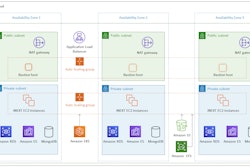
In response to misinformation being circulated via social media platforms globally, GS1 US, the not-for-profit information standards organization and administrator of the Universal Product Code (U.P.C.), issued a formal statement to confirm that the product identification numbers within a U.P.C. barcode (or EAN for Europe) on product packaging do not indicate a product’s country of origin.
“Inaccurate social media posts claiming that U.P.C. barcodes can identify where a product was produced have gone viral in recent weeks. While the first three numbers encoded within a U.P.C. may correlate to the country in which a brand operates, they do not signify the location where a product was manufactured,” says Carrie Wilkie, senior vice president of enterprise program delivery, GS1 US. “We understand there’s heightened interest among shoppers to understand where products are made, but GS1 member companies can manufacture products anywhere in the world and the U.P.C. in use today does not provide that level of detail for consumers.”
U.P.C. barcodes contain a GS1 Global Trade Item Number (GTIN), a sequence of numbers located under the barcode symbol that uniquely identifies a product in the supply chain, including at point of sale. To create GTINs, brands must first secure a GS1 Company Prefix that globally identifies their company in the supply chain and links their products to their brand. An authentic GS1 Company Prefix, validated by many retailers, is acquired through a license agreement with GS1 US or any other GS1 member organization around the globe. Once the GS1 Company Prefix is secured, brands create their own GTINs, often via GS1 US Data Hub, by combining their GS1 Company Prefix with a unique product number that they assign. The GS1 Company Prefix reflects the country from which a Prefix was licensed—often, but not always, reflecting the location of the company headquarters.
“Within the next five years, we expect brands will increasingly make detailed product information available to shoppers via product packaging. With a simple smartphone scan of a product, consumers will have access to a host of information provided by the brand, which GS1 US is recommending include country of origin,” added Wilkie.
A recent GS1 US research study titled “Powering the Future of Retail” revealed that 82% of retailers and 92% of brand owners support transitioning from the U.P.C. to a data-rich two-dimensional (2D) barcode (e.g., QR Code, GS1 DataMatrix), digital watermark and/or radio frequency identification (RFID) in the next one to five years. The study recognizes that an advanced data carrier is needed to evolve retail and provide consumers with robust product information and transparency.















